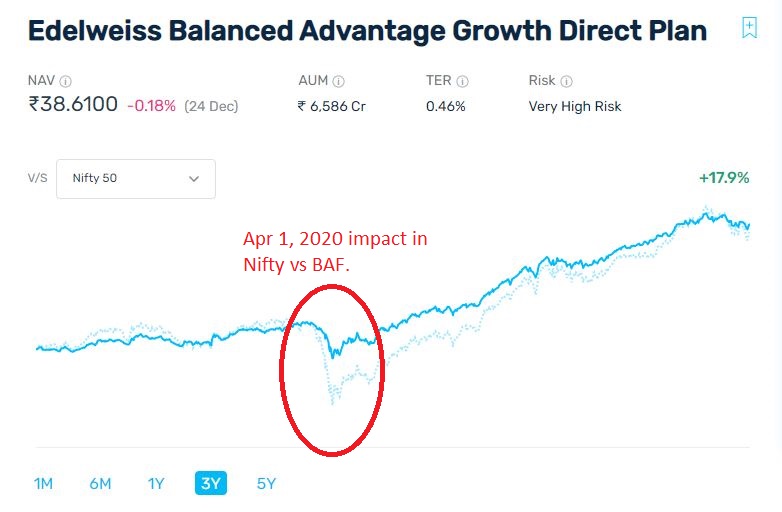Balanced Advantage funds invest in equities, arbitrage opportunities and derivative strategies on the one hand and debt and money market instruments on the other. This fund may also invest in Infrastructure Investment Trusts and Real Estate Investment Trusts. The investment objective of the fund is to generate capital appreciation by investing in a dynamically balanced portfolio of equity & equity related securities and debt & money market securities. Is your portfolio balanced?
The BAF is the fund of all seasons
The equity exposure flexibility attached to the BAF makes this fund as “Fund of all seasons”. Whether market up and down, the fund manager handles the effective equity exposure. This model uses derivatives to reduce effective exposure of equity funds from 51% to 80%. In recent times, HDFC asset management company maintains it equity exposure to 57% of markets rose in 2021. This allows BAFs to be taxed as equity funds even if their actual equity exposure is minimal at times.
Why your portfolio should be balanced?
Asset allocation is most important factor in any portfolio. 90% of your returns are determined by your asset allocation, 5% by product selection and 5% by market timing. In BAF, fund manager has flexibility to select the portfolio based on market conditions. BAF’s is good for new investors as it invests in both equity and debt instrument to lower the risk. BAF funds auto rebalance based on market conditions. BAFs have greater protection compared to aggressive hybrid funds due to their flexibility of increasing allocation to debt investments.
Let us take the bearish move in April 2020. It impacted the nifty index by more than 30%. But the BAF impacted by 5% overall due to it diversity in various asset class. Here we have taken edelweiss balanced advantage fund to compare nifty vs BAF. you can take any BAF fund and compare with Nifty returns.

Hybrid Funds vs Balanced Advantage:
Balanced Hybrid Funds will invest 40% to 60% of total assets in equities and 40% to 60% in debt instruments. No Arbitrage would be permitted in this scheme. Aggressive Hybrid Funds will invest 65% to 80% of total assets in equities and 20% to 35% in debt instruments. But Balanced Advantage Funds allocation to equity and debt will be managed dynamically.
If you are medium risk taker and new to mutual funds, you can go with the fund manager’s call on equity exposure by selecting BAF.
Taxed as equity even though invest highly in debt market based on market condition
It is treated as equity funds for tax purposes and hence attract a 10% long-term capital gains tax for holding periods above 1 year on gains above ₹1 lakh.
Points to be noted in BAF:
- BAFs expense ratios tend to be higher than what you can secure by investing in separate equity and debt mutual funds.
- Most of the equity exposure in large cap focused.
- BAFs do not take exposure to international equity or commodities like gold; restricting their ability to generate returns when both Indian stocks and bonds fall.
BAF’s is good for new investors as it invests in both equity and debt instrument to lower the risk.
Here we listed top 7 BAF funds based on expense ratio, returns and risk profile. You can select any one the fund to invest.
- Edelweiss Balanced Advantage Growth Direct Plan
- L&T Balanced Advantage Growth Direct Plan
- Nippon India Balanced Advantage Growth Direct Plan
- IDFC Balanced Advantage Growth Direct Plan
- Kotak Balanced Advantage Growth Direct Plan
- ICICI Prudential Balanced Advantage Growth Direct Plan
- Aditya Birla Sun Life Balanced Advantage Growth Direct Plan
Balanced Advantage Funds are best fund to start your equity mutual funds journey. It gives better than Fixed deposit and debt funds in long term. You are new to equity market and your invest horizon is more than 10 years, you can start with Balanced Advantage funds. Happy Investing.





